|
It's meterological autumn and the unofficial start of the UK's stargazing season! Here's what we're looking at this month. From moons to planets to clusters - there's something for everyone and not all things need equipment to enjoy. Keep looking up! Download this as a PDF here.
0 Comments
Here's this month's stargazing from St Martin's! Download as a PDF here.
July is another challenging month for stargazing as it's still getting dark very late. However, things start to improve by the end of the month as nights lengthen and Saturn becomes better placed for viewing. Download this as a PDF here.
Oodles to gaze up at this month, with several of Jupiter's moons transiting its surface, meteor showers and showy constellations! And of course, there's our Dark Skies Week 30 Sep - 6 Oct, jam-packed with astronomy and guest speakers. Download our sky guide as a PDF here.
Lots to enjoy this month - so here's our local guide! And of course there's Scilly Dark Skies Week to look forward to at the end of the month! Download this as a PDF here.
A relatively busy month up above, with two full Moons, the Pleiades, plus some lovely constellations... and let's not forget favourable viewing of Jupiter and Saturn! August is a great month to look up. Download this as a PDF here.
July's here already and that means the nights are getting darker - gradually! Stargazing on Scilly in July is still best after midnight. Some nice things to spot - if it's not a particularly 'busy' month - including the Summer Triangle and Jupiter. Download this as a PDF here.
Ah, June... known on Scilly for long, lovely days and... not very dark nights! Still, there's something to enjoy here if you are willing - dusk, after midnight, dawn... Here's what we're setting our sights on this month. Download this as a PDF here.
Plenty to gaze up at this month, before we lose out on dark night skies to longer, brighter days in June! Here's what we'll be setting our sights on this May. Download this as a PDF here.
|
BYCharlie Payne POSTS
September 2024
|

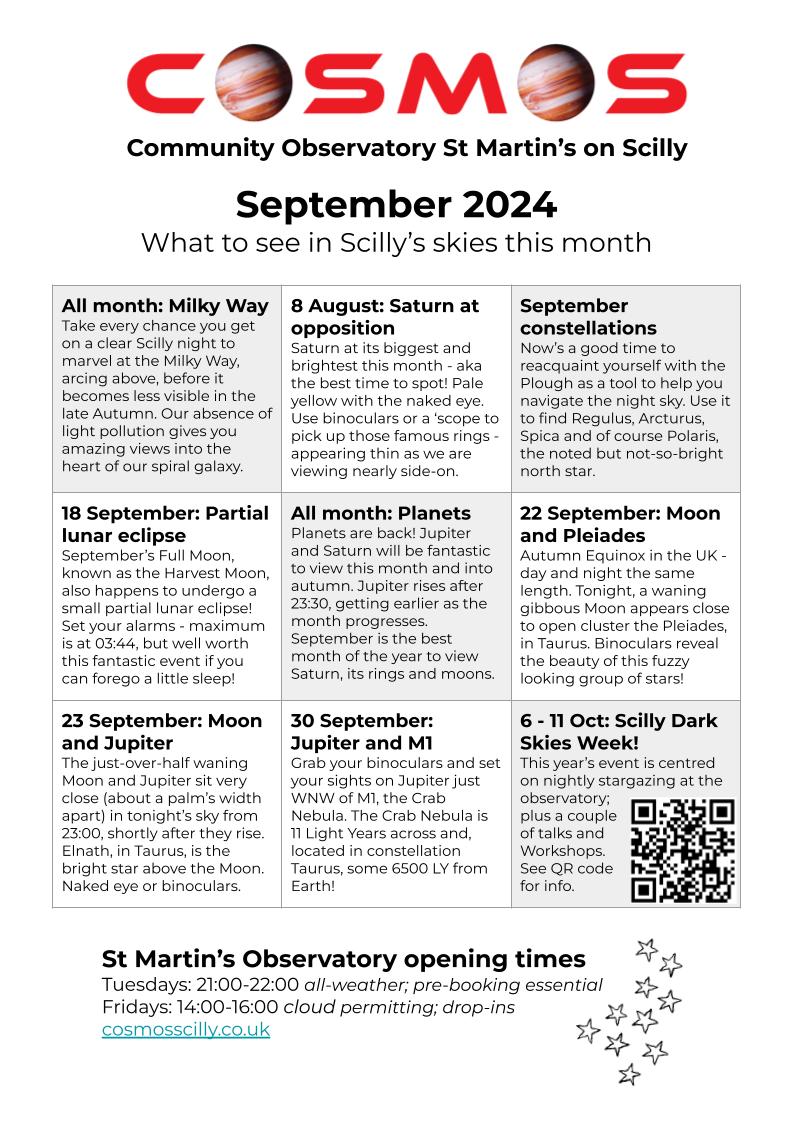
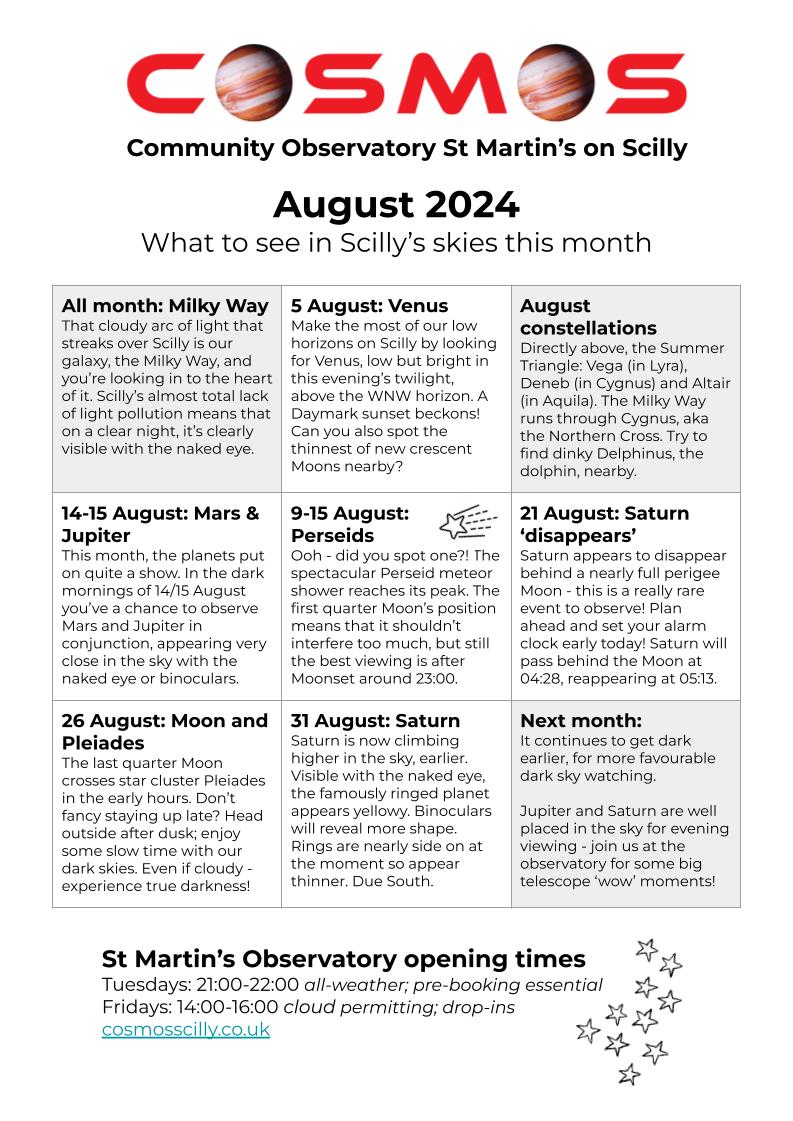
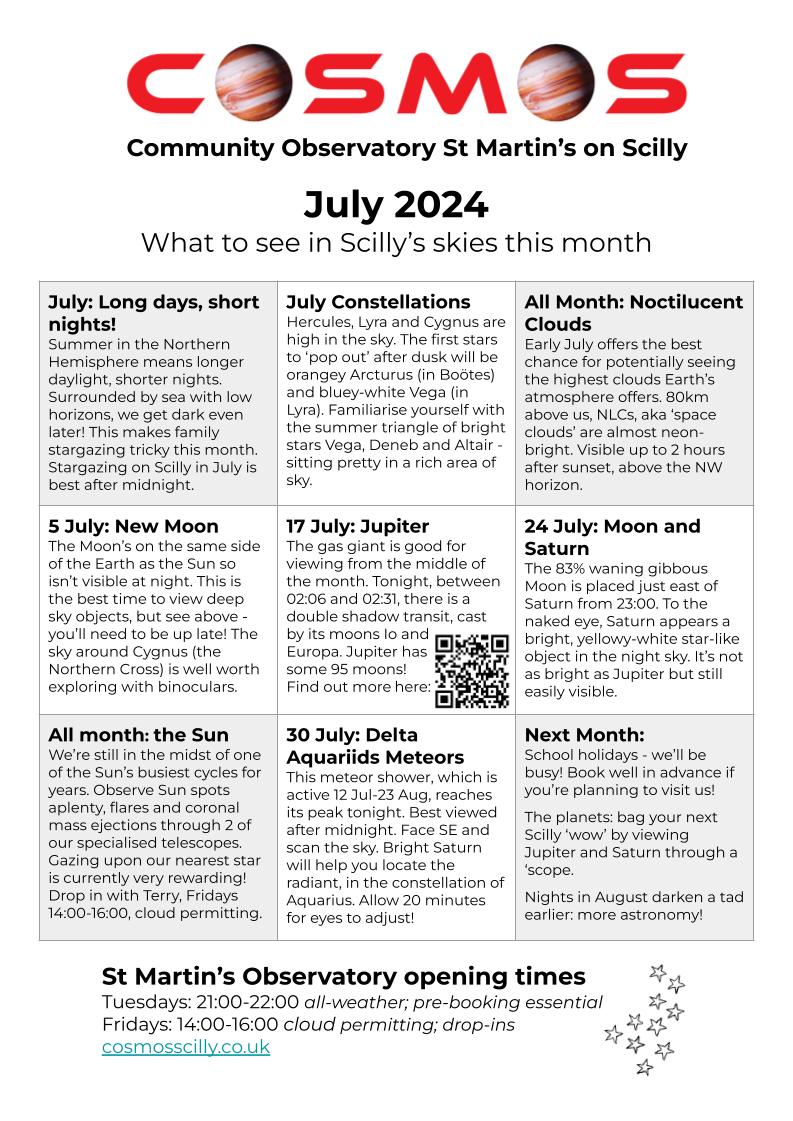
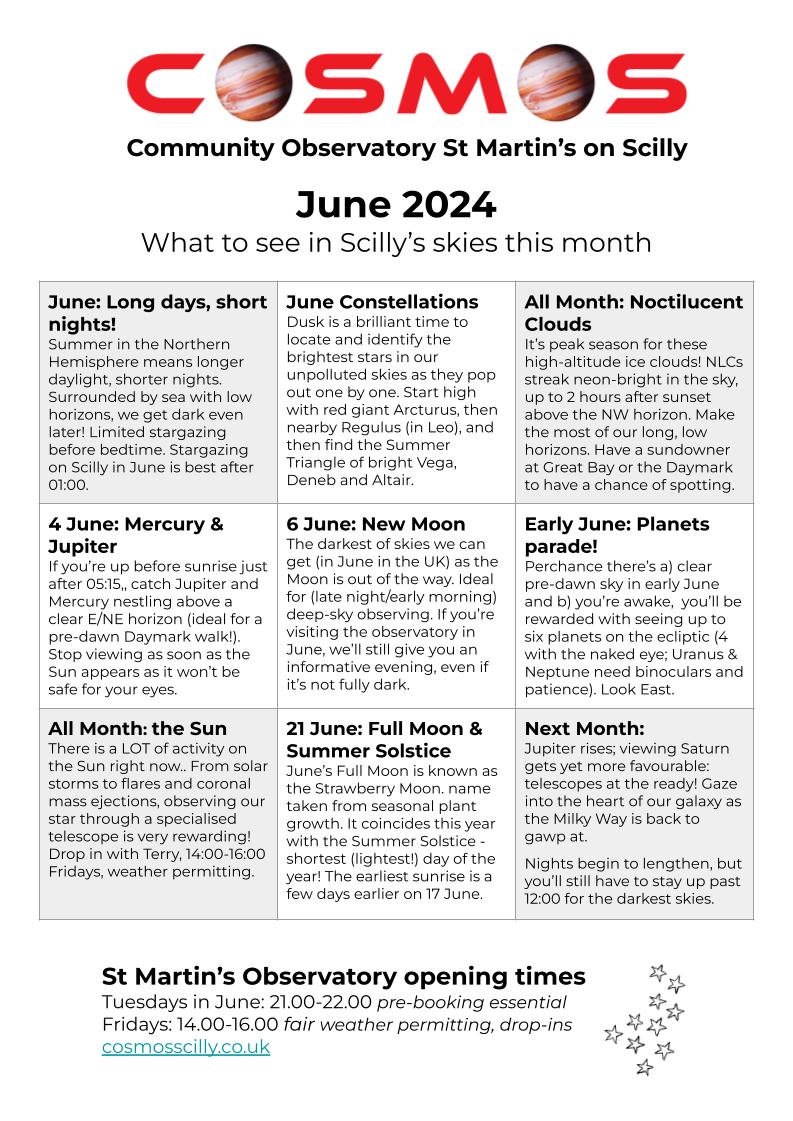
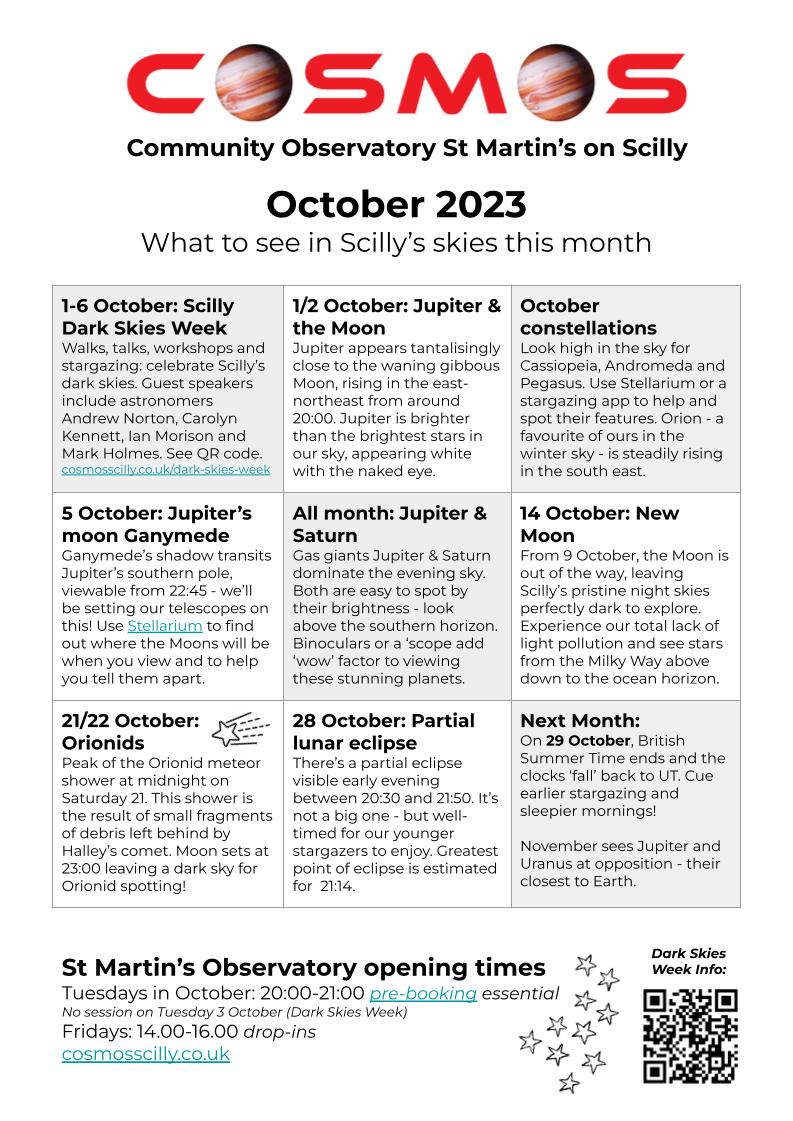
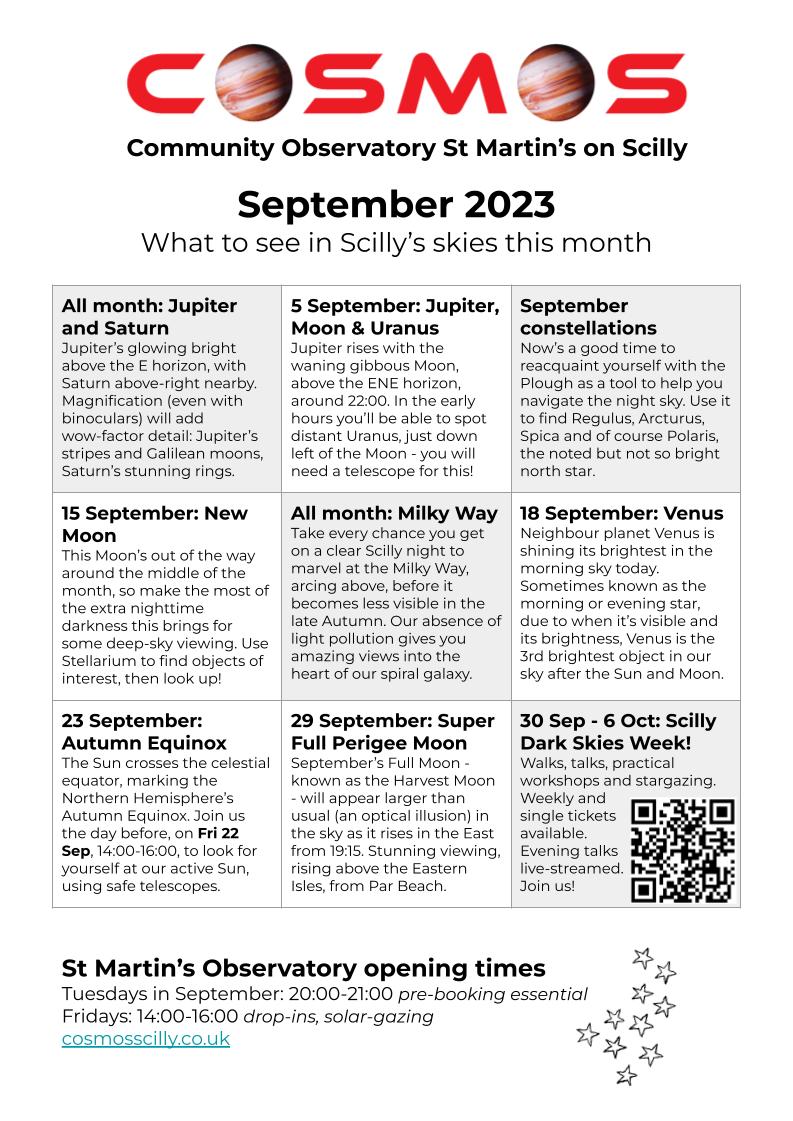
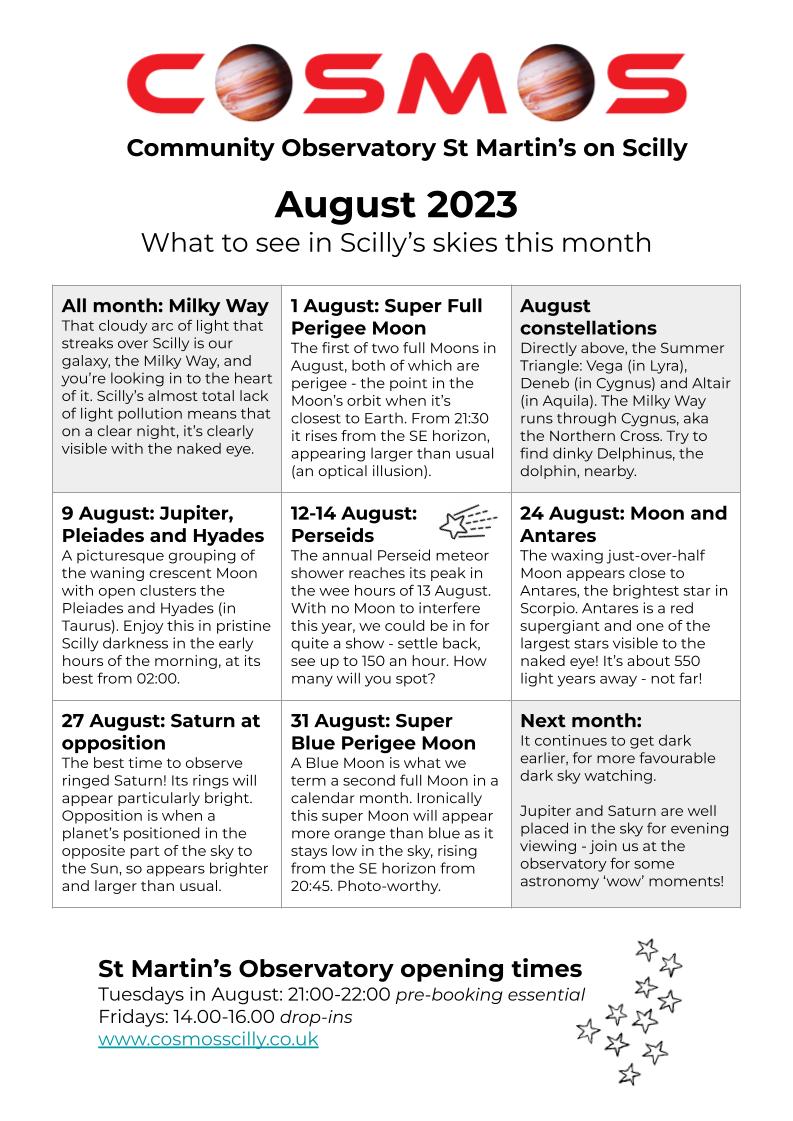

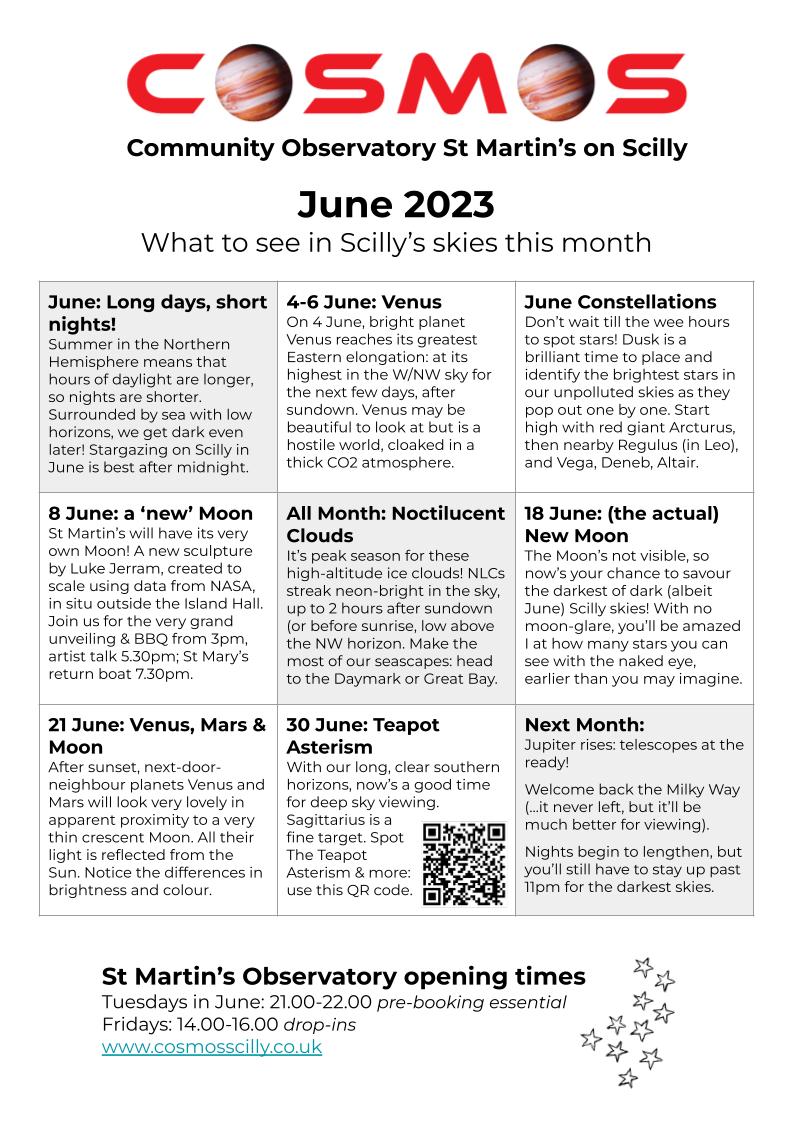
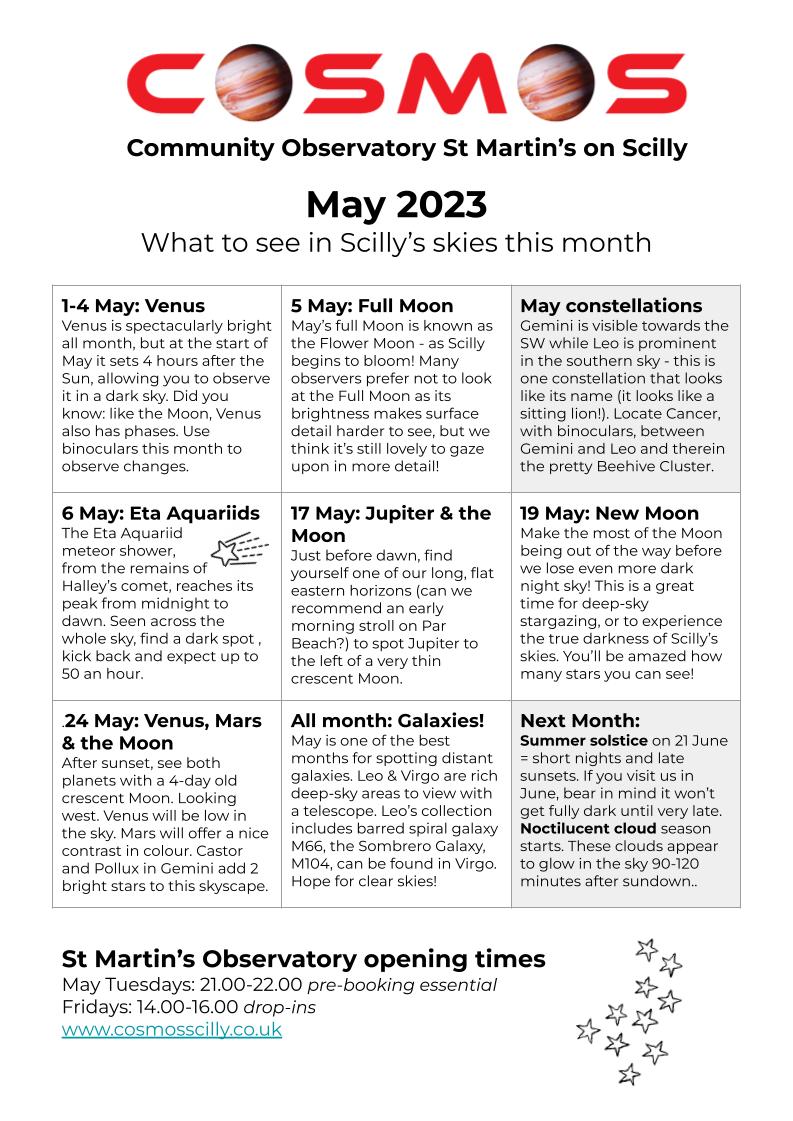
 RSS Feed
RSS Feed